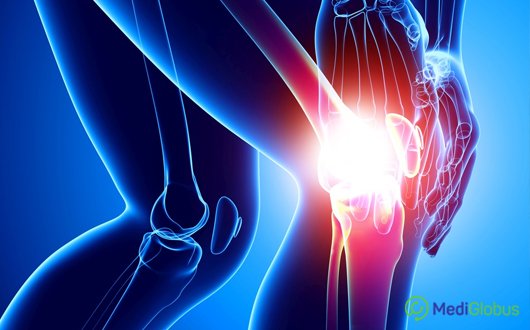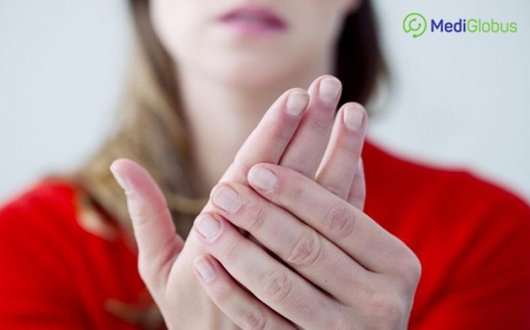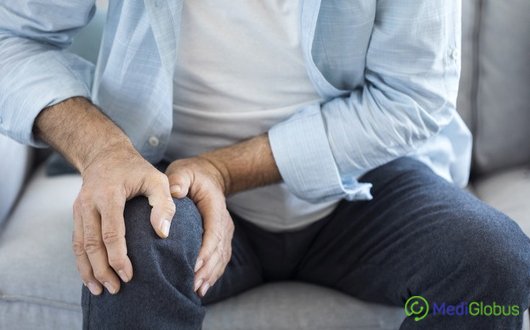More and more people experience joints diseases in the process of life. Possessing insufficient information about the potential of modern medicine, many patients are forced to endure severe pain every day and take treatment that does not bring an obvious result.
Few of the most common diseases of the musculoskeletal system are arthritis and arthrosis. Both diseases occur due to a large number of etiological factors and affect the joints of a person, which leads to deformities, a violation of their functionality, and as a result – a significant reduction in the quality of life.
Arthrosis (Osteoarthrosis, deforming osteoarthrosis)
WHAT IS ARTHROSIS, WHAT ARE ITS SYMPTOMS?

Arthrosis (Osteoarthrosis) is a degenerative disease of the joints, which is based on the damage to the cartilage tissue of the articular bones. It is the most common disease and is considered as one of the main reasons of disability of the population.
Not only cartilage tissue is usually involved in the pathological process, but also the subchondral bone (the section of the bone on which the cartilaginous plate is located), the ligamentous apparatus of the joint, the synovial membrane and the periarticular muscular tissue.
Degenerative-dystrophic processes begin in cartilage, but very quickly affect almost all tissues of the joint – leading to a change in its shape, impaired functionality or limited mobility, moderate, and later pronounced pain syndrome and inflammatory process.
Osteoarthritis affects the joints of the hands, knees (gonarthrosis), hip (coxarthrosis), ankle and shoulder joints. And other lesions of the joints in the cervical and lumbar spine. The main signs of osteoarthritis are pain, limited mobility, deformity, crunch inside the joint when moving.
Stages of Arthrosis
In medicine, it is customary to distinguish 3 stages (degrees) of the progression of arthrosis. Stage 1 proceeds almost imperceptibly with minor changes in the structure of the joint, thinning of cartilage tissue occurs, the composition of synovial fluid changes. Discomfort in the area of the affected joint is felt only after physical exertion.
In stage 2, there are already changes that cause a slight crunch and moderate pain when walking and just moving. There may be a decrease in the amplitude of movements.
Stage 3 is considered the most severe, here the patients experience severe pain, a clear limitation of joint mobility, and deformations are visible.
The cartilaginous plates of the articular surfaces of the bones are almost erased, the bone tissue is involved in the process, which causes unbearable pain. Person moves with a cane or on a walker.

REASONS AND RISK FACTORS
Despite the rather large number of etiological factors in the development of the disease, today only 3 main causes of degenerative processes in the joint have been identified:
- Injury – is considered the most common cause of the development of arthrosis;
- Dysplasia or a violation of the normal biomechanics of the joint, as a consequence of congenital features;
- Inflammatory process (autoimmune, infectious, aseptic genesis).
The risk factors for developing the disease are very diverse, they increase the likelihood of joint problems and aggravate the course of the disease. These include:
- Hereditary disorders in the synthesis of collagen II;
- Excess weight;
- Hypothermia;
- Joint dysplasia;
- Regular microtraumas;
- Joint surgery;
- Abnormal physical exertion, including professional sports.
DIAGNOSTICS AND TREATMENT OF ARTHROSIS
The doctor will prescribe the necessary investigations, on the results of which the therapy will be selected.
Diagnosis of arthrosis does not cause much difficulty. Most often, for the diagnosis and determination of the stage of the process, it is enough to do the X-ray examination of the joint (standard or digital X-rays are used). In rare cases, an MRI may be indicated.
Treatment of arthrosis depends on the stage of the disease. If the disease is diagnosed at an early stage, it is possible to stop its progression by correcting the lifestyle, as well as physical therapy exercises.
In case of complete destruction of cartilage tissue, the only option is joint replacement.

Treatment of arthritis, especially rheumatoid, depends on the manifestations of the disease and begins, as a rule, with drug therapy. Joint replacements are also performed when large joints are deformed.
1) Joint replacement is the most effective treatment method. Joint replacement can be either partial or complete (total). This method is effective in 90% of cases, patients no longer complain of pain, the mobility of the joint is significantly restored. Stage 3 arthrosis is a direct indication for joint endoprosthetics.
Prostheses are most often made of cobalt-chromium, cobalt-chromium-molybdenum, or hypoallergenic titanium. Heads of articular surfaces are made from high-molecular polymer compounds or ceramics. The type of implant is chosen exclusively by the doctor.
Joints replacement are carried out in many countries. Such procedures in clinics abroad is expensive but at the same time, medical centers there have a great advantage with minimally invasive surgical approaches, fast and high-quality rehabilitation, effective relief of the postoperative pain syndrome and a high percentage of treatment success. As early as 1 month after surgery to replace the joint, patients can return to active life and sports.
2) Drug therapy. Treatment with anti-inflammatory and hormonal drugs is the basis of drug therapy for both arthrosis and arthritis. The purpose of this treatment is to stop the inflammatory process in the tissues of the joint and slow the progression of the disease. Chondroprotectors are also prescribed, which, with prolonged use, contribute to the improvement of cartilage tissue.

3) PRP-therapy (plasma therapy) is a treatment method in which platelet-rich blood products (plasma), made from the patient’s own blood, are injected into the joint cavity.
This method is very effective in the initial stages of arthrosis and requires about 3-5 injections. PRP-therapy is considered safe, since the treatment process does not use third-party drugs that can cause complications.
4) Arthroscopy. Minimally invasive surgical method performed using a special video-endoscopic technique.
During the operation, excess and deformed parts of the cartilage tissue are removed from the surface of the joint, the surface of the joint is polished, which leads to an improvement in the patient’s general condition and a reduction in pain. This method is applicable to a greater extent with arthrosis, rarely used in arthritis.
5) Therapeutic physical training and hardware treatment. Exercise therapy and hardware effects on the joint are used exclusively during remission. In the beginning stage of the disease, physical therapy may be the main therapy, at later stages this method may be used as an additional therapy to the main treatment.
What is arthritis?
Arthritis is a complex diagnosis that combines several pathologies, the main mechanism of their development is the inflammatory process in the tissues of the joint. It may be autoimmune or due to an infection.
Under the autoimmune inflammation imply a violation in the immune processes of the body, which are associated with increased synthesis of rheumatoid factor – specific antibodies. Elevated concentrations of these antibodies lead to damage of the joints tissue, most often a similar diagnosis sounds like rheumatoid arthritis. Following tests are used for the diagnosis of arthritis:
- General blood analysis;
- Blood test for rheumatoid factor and other markers of inflammation;
- X-rays of the joints;
- MRI of the joints;
- Analysis of synovial fluid.
Arthritis is a slowly progressing disease, and the main method of treatment is drug therapy, which slows down the course of the disease. Sooner or later, degenerative processes in the joint lead to a complete or partial loss of joint function and disability of the patient.
If you have any questions about the treatment of diseases of the joints abroad, our coordinators are ready to give detailed answers!





